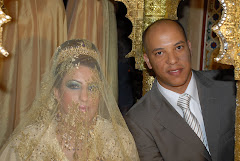Curriculum is what guides the learning and the teaching. Most of the time it is mandated by the state and the school districts. The curriculum should have a set of goals, standards and assessment tools. It also tells the teachers what to teach, how to teach and when to teach. The curriculum also can be used as a tool to promote higher and deeper thinking and also should motivates and get the students engaged in learning. Our role as educators is to try and change the things in the curriculum that are not working or to try to use them in a different way than what’s prescribed. We should also make the curriculum as user friendly as possible and open the door to creativity. We also should connect the curriculum with everyday life to make meaningful to students. My students who are between 5 and 11 years are not at all interested in knowing about some parts of the French history but by putting in games and songs I will get excited about learning it. We should be the facilitators of the learning and not only the men and women.
Well I am going to sound just like Janna. As world language teachers I have to say we had no curriculum we were “left behind”J. With the appointment of a new world language specialist, we started seeing a lot of good changes, and one of them is the designing of a framework which is also a state pilot program that is generating a lot of interest from districts nationally. This is the work of 10 certified elementary world language teachers. This framework is language free, and that what’s beautiful about it. Each one of us knows what unit to each and when to start and end each unit, each one has the option of choosing from a whole range of activities while the goals and the standards are the same. We also created an online resource center where we all share the most successful strategies and activities. I have the full freedom in teaching what best suits my students. I compare the freedom and the control I have over what I teach now with the rigid curriculum I was forced to obey to back in Morocco. Therefore gaining even partial control can make the learning/teaching a fun and beneficial experience.
As I stated previously having a framework well thought and designed to promote language proficiency, global cultural awareness. With the framework putting me on track all I have left is to design activities that will guarantee maximum fun and mastery of what I want to teach. Our framework is so hands on and so culturally connected so while students are learning the language they are also enjoying learning about the cultural similarities between francophone countries and the United States have the flexibility to link worldwide events and changes to my lessons and broaden my students’ horizons in an effort to make them world citizens. I was happy to see that world language teaching was mentioned by Wiggins and McTighe.
Subscribe to:
Post Comments (Atom)


Hello- thanks for referencing Janna's blog - nice connection. I think about what you are saying about a framework that is language free and gives you some flexibility to adapt as you see fit for your students. This is exactly what a curriculum should be but as you can see from other posts it does not always come off like this. I wonder if this could be replicated on a bigger scale or is the strength of this type of curriculum in that it only has to serve a small segment of content? I think we all have a lot to learn from your experiences.
ReplyDelete